Salinas Grandes refers to expansive salt flats located in Argentina, known for their breathtaking and otherworldly landscapes. These salt flats cover an area of approximately 1,500 square miles and are situated at an average altitude of 11,320 feet (3,450 meters) above sea level, spanning across the provinces of Jujuy and Salta. The region’s stark white salt crust, which can appear endlessly under the vast blue sky, is a result of centuries of water evaporation from what was once a large lake.
Visitors often describe the experience as stepping onto the surface of another planet, with the ground beneath their feet composed of hexagonal patterns of crystalline salt. The Salinas Grandes also serve a practical purpose, as the salt is mined and contributes to local economies. The flats are accessible via tours, which often start from the nearby town of Purmamarca, providing a unique opportunity to explore this natural wonder. The journey to the flats is an adventure in itself, with scenic routes passing through mountainous terrain dotted with cacti and indigenous wildlife such as vicuñas.
Our Visit
I was the first one to get on the tour bus at the Travel Agency office at 7:00 am in the morning. The driver went to other hotels, and we picked up the other guests, and the drive took 12 of us tourists and a multi-lingual guide to Salinas Grande. We had a couple stops on the way to Salinas Grandes, the first one was a short break in the city of Jujuy and the second stop was at a longer break at a store in a small pueblo on the way. Here we had 30-minutes to stretch-out, ad get some drinks and snacks.
Our tour started in Salta, Argentina at 7:00 am. We had the driver, the multi-lingual guide, and myself with 11 other excited tourists. We drove through some scenic canyons, crossed the Andes Mountains at over 13,000 feet and went back down to the Salinas Grandes Salt Flats. Our tour bus pulls into Salinas Grandes, and we stop for a short time to see the souvenirs and handmade goods from the locals. We each had to pay 2,000 Argentina Pesos ($2) to our tour guide to go out up-close to the Saltwater pools and canals.
Long narrow canals have been built above the former seabed and filled with underground saltwater at the beginning of the summer. Once the water evaporates in the hot summer, the remaining salt is harvested. There are also shallow ponds of seawater spread out with spring fed seawater breaking the surface. On the larger ponds the guide will take photographs of your group in the reflections. I declined that opportunity!
After Salinas Grandes our next stop was at Purmamarca. Here we had ninety minutes to grab lunch, explore the small pueblo, climb up the short lookout over the Mountain of Seven Colors, and a look at the souvenirs.
My first order of business in Purmamarca was lunch! As I walked through the small town I saw a promising restaurant. I went inside to eat, and a two-member band was just setting up to play music. They played rock in both Spanish and English and included some 1970s American classic songs. I ordered a llama steak with potatoes, a garden salad, and a glass or Merlot! I enjoyed the meal and the music and went on to see the Mountain of Seven Colors.
From Purmamarca we headed back to Salta back through the scenic canyons of the Andes foothills. We had a couple short breaks and then back to Salta. Since I was the first one on in the morning, I had the privilege of being the first one dropped off. I stopped in a local small museum that was still open, grabbed some dinner, and got a taxi back to my hotel ready for my next adventure!
Origins of the Salt
The natural wonder of Salinas Grandes formed approximately 10 million years ago due to volcanic activity. Over time, this region has undergone countless cycles of rainfall and evaporation, contributing to the accumulation of the salt crust that is approximately a foot deep over an area of about fifty square miles.
These salt flats are situated in a closed basin, where during the brief rainy season, water from the surrounding higher areas collects in the depression. For the rest of the year, the arid conditions and intense sunlight lead to the evaporation of this water, leaving behind layers of salt. These processes, along with volcanic events, have contributed to the unique salinization of the area, creating a landscape that is not only visually stunning but also of significant geological interest. The Salinas Grandes is one of the largest salt flats in the world, and its formation is a testament to the dynamic and ever-changing nature of our planet’s geology.
Salt Mining of Salinas Grandes
The Salinas Grandes, a vast salt flat located in Argentina, is a site of both natural beauty and industrious salt mining. The process of mining the salt begins with the creation of crystallization pools by the local villagers during the dry season, which spans from April to November. These pools, measuring 4 by six feet (2 meters) and 60 centimeters deep, are filled with a 30-centimeter layer of water that allows the salt to “mature” over a year through evaporation. Once the water has evaporated, the salt is harvested and processed.
The indigenous communities of the Kolla and Atacama peoples, who inhabit the region, engage in this traditional and cooperative method of salt extraction. They also participate in community-based tourism and create handicrafts, adding to the economic activities surrounding the salt flats. The harvested salt is then prepared for sale, contributing to the local economy and providing a source of income for these communities.
Ecology of Salinas Grandes
The Salinas Grandes is not only a source of livelihood but also an ecological wonder. The salt flat’s ecosystem is fragile, with scarce surface water resources and a unique hexagonal geometric pattern on the salt crust, which is a result of complex salinization processes in closed basins. These processes involve alternating dry and wet periods, as well as volcanic events that distribute and deposit minerals. The salt flats are also a significant tourist attraction, known for their sublime desert landscape and the contrast between the white salt and the deep blue sky. Visitors can explore the area, marvel at the geometric order of the salt crust, and learn about the traditional methods of salt extraction. The Salinas Grandes is a testament to the balance between human activity and natural preservation, where traditional practices harmonize with the environment.
The contrast of the deep red Andean mountains in the background against the white expanse creates a stunning visual effect that attracts photographers and nature enthusiasts alike. For those planning to visit, it’s important to consider the high altitude and prepare accordingly, as the thin air can lead to altitude sickness. Despite its remote location, Salinas Grandes remains one of Argentina’s most captivating natural attractions and is recognized as one of the country’s seven natural wonders. It’s a place where the beauty of nature’s simplicity meets the complexity of its geological history, offering a unique and unforgettable experience for all who venture there.
See our Adventures on YouTube: @HBMaverick
Check out our Adventures on our blogs page: Blogs – HB Maverick Filmmaking
“We will see YOU on the next adventure!”

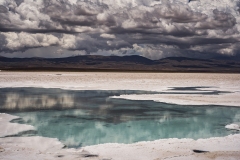
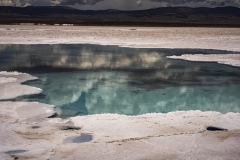
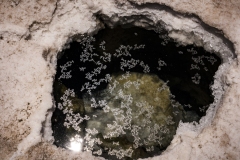
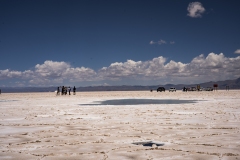
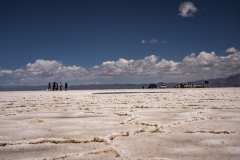
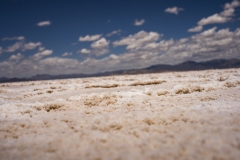

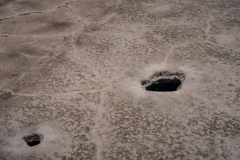
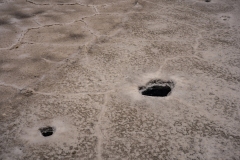
Phil Jordan
30 Mar 2024Hi Dave,
Some very nice work! Looking forward to more of your adventures.